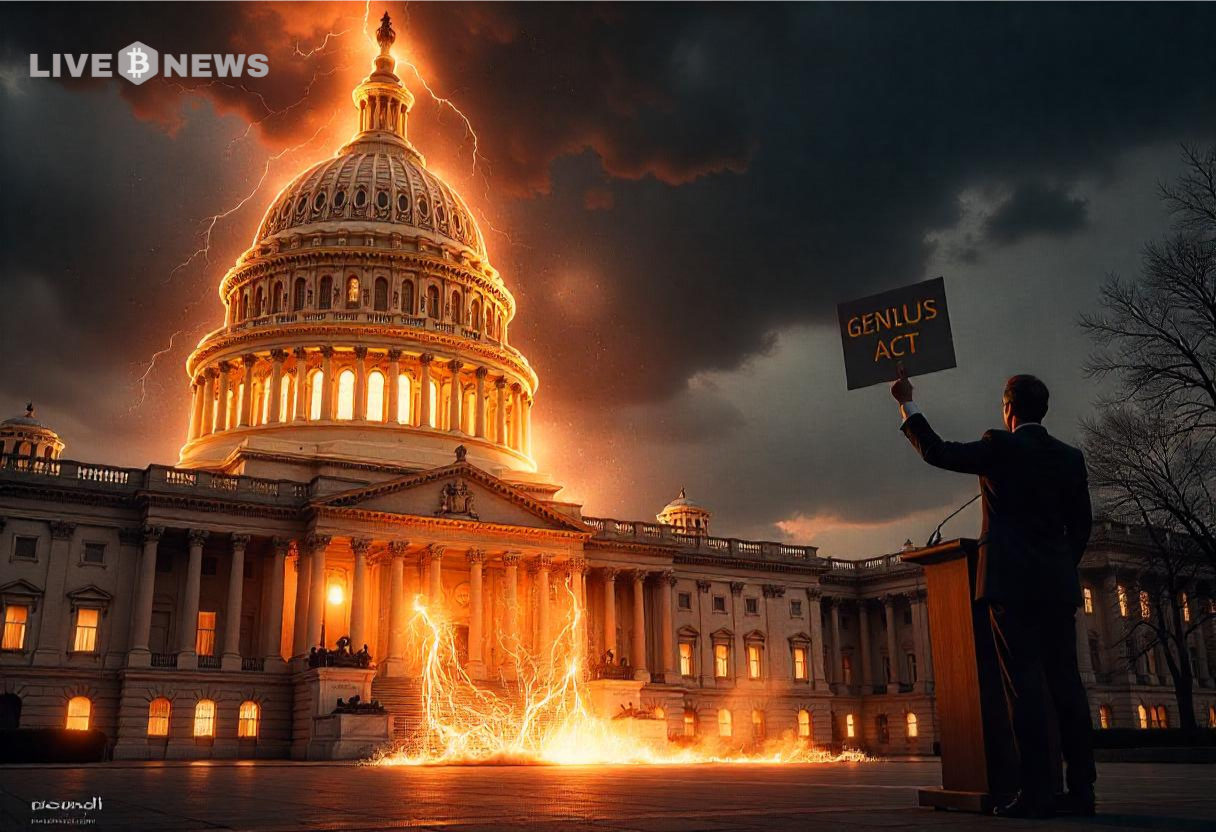Key Insights:
- The U.S. Senate passed the GENIUS Act to strengthen stablecoin oversight.
- However, the Amundi asset manager warns the GENIUS Act could unintentionally weaken the U.S. dollar’s dominance.
- Despite warnings, the stablecoin market has grown to over $254 billion, and will likely hit $3.7 trillion by 2030.
The GENIUS Act, which was recently passed by the U.S. Senate, is meant to strengthen the stablecoin market and improve oversight over the sector. However, not everyone sees it as a win for the US dollar and its economy.
In fact, Amundi, the largest asset manager in Europe has just raised several reasons why the bill could backfire. Here’s why the GENIUS Act could lead to long-term issues with payments and even weaken the U.S. dollar’s dominance.
What Is the GENIUS Act?
The GENIUS Act was passed by the U.S. Senate on June 17.
Put simply, the bill was put in place to make stablecoins safer, by making sure that issuers fully collateralize all dollar-backed tokens. In essence, under the GENIUS Act, all dollar-backed stablecoins must be backed 1:1 with high-quality liquid assets like U.S. Treasury bonds.
This makes sure that their value remains “stable” and trustworthy for all.
Amundi Asks, “Genius or Evil?”
Vincent Mortier, Chief Investment Officer at Amundi, however, is not a fan of this new law. Mortier recently sat through an interview with Reuters and summed up the stakes:
“It could be genius, or it could be evil,” he said
One of his biggest issues with the bill is how it encourages more companies to issue fully collateralized stablecoins. Mortier says that the act might unintentionally create a system that competes with the U.S. dollar rather than strengthens it.
On the surface, stablecoins backed by the dollar seem to reinforce the greenback’s role as a reserve currency. Still, Mortier argues that these stablecoins could soon act as alternatives to traditional dollar-based systems.
If stablecoins are widely adopted, they may reduce demand for physical dollars and damage the very dominance they were created to preserve.
A Double-Edged Sword
The GENIUS Act’s 1:1 backing requirement could certainly boost demand for U.S. Treasuries, since stablecoin issuers will need to hold massive reserves of them.
However, Mortier warns that this could also point towards a lack of trust in the dollar’s inherent strength. “If we need stablecoins to ensure the dollar’s value, what does that say about the dollar itself?” he asked.
Worse still, Mortier points out that companies issuing these tokens, whether they’re fintech startups or tech giants like Apple, Google, or Elon Musk’s X, have a strong chance of becoming quasi-banks.
These entities might handle billions in deposits, process payments, and even offer interest:
All while operating outside the mainstream financial system. Mortier argues that such an event could destabilize worldwide payments and create major risks that regulators aren’t yet equipped to handle.
Stablecoins on the Rise
Despite these warnings, stablecoins are growing quickly. According to DefiLlama, the total market for stablecoins is now worth over $254 billion. This is nearly double what it was in early 2023.
Interestingly, 98% of these tokens are pegged to the U.S. dollar.
Analysts at JPMorgan expect the supply of stablecoins to double again in the next few years, and U.S. Treasury Secretary Scott Bessent predicts the market could hit $3.7 trillion by 2030.
Recent reporting projects that stablecoins could grow into a $3.7 trillion market by the end of the decade. That scenario becomes more likely with passage of the GENIUS Act.
A thriving stablecoin ecosystem will drive demand from the private sector for US Treasuries, which back…
— Treasury Secretary Scott Bessent (@SecScottBessent) June 17, 2025
This explosive growth will likely be fueled by widespread adoption of stablecoins in cross-border payments, as well as defi and corporate treasuries.
Overall, the GENIUS Act is a step toward regulating the unpredictable aspects of stablecoins. Still, Amundi’s warning is a clear one.
The law could unlock new problems, and open a whole new Pandora’s box of problems for the US dollar.
